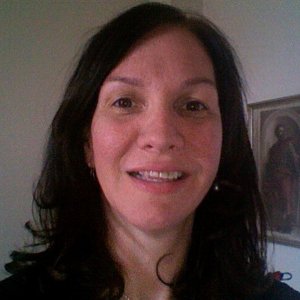
Starhawk recently spoke to Occupy Santa Cruzy. Her newest book may become the essential Occupy How To. Photo: OccupySantaCruz.
Okay, I’m biased. I’ve always loved the work of Starhawk, whose 1979 book The Spiral Dance opened up a new way of thinking about the feminine principle in our lives while affirming the interconnectedness of all life on Earth (and cosmologically) in a way that resonated deeply with my soul.
Even then Starhawk had practical tips and exercises one could do to tap into the deeper strands of our being, shift thinking, and inspire concrete action toward positive change.
In The Empowerment Manual, A Guide for Collaborative Groups, she takes her profound spiritual integration, communication skills, contemplative analyses and practical ideas to a new level.
The #OWS Bible
Released in 2011, with an introduction that references this year’s dramatic Tahrir Square and Wisconsin protests, Starhawk appears to have anticipated the broad and unabashed presence of public group processing endeavors in the social movements shaking up the “world order” today.

The Empowerment Manual, Starhawk, New Society Publishers, 304pp, $16.21.
This book could easily be the bible, the essential guidepost, the indispensable how to manual for those in the #OccupyWallStreet movement, both on the ground, and sympathizing from a distance (or working in small towns for the same aims.)
Frankly, all those oh-so-befuddled main stream media types who seem to have gotten journalism degrees for nothing considering their utter inability to knit together the Occupy story, would benefit from reading this manual as well. It would help them gain insight into a profound new social strand of interaction, decision making, and action that is not likely to shrink away now that it has begun to take concrete form.
Starhawk explains what to many seems the baffling process of consensus decision making. She also covers the necessary elements for healthy group processes, factors that undermine those processes, and how to guard against destructive elements.
Beginning first with the individual, and the importance of self-care, self-awareness, and self-responsibility, Starhawk weaves this into the give-and-take required in any multi-person process.
New models of engagement
Eschewing the hierarchical model upon which so much of our top-down, competitive society is based (not a social norm, merely an historical phenomenon) Starhawk offers insight into just how difficult it is to maintain group cohesion and integrity when the paradigms of our era do not serve that context. But going beyond defining the challenges, she bares the dysfunctions and derangements that groups must be wary of, offering a clear way out of them should they arise.
Will all people be easy to work with? No. That’s why her take on “Dealing with Difficult People” comes in handy, allowing readers to go beyond the desire to simply exclude or shirk someone off, and instead engage to the degree possible to turn the situation around.
And let’s face it, the worst of these “difficult people” may be the infiltrators, agitators and provacatuers whose aim is to undermine the group. #OWSers and others who deny such a phenomenon should take a cold look at American history, especially of the FBI and CIA. I wouldn’t go so far as to say, “trust no one,” but rather, as Starhawk points out, to remain free from paranoia while working openly with all participants. She has practical advice for how to shift the role of a group member whose actions do become suspect. This worthy foray into the darker side of group gatherings is itself empowering because she suggests transparency, rather than secrecy, as the key to overcoming those who would attempt to thwart a group’s aims.
Overall, The Empowerment Manual is about positive change. As the book’s back cover claims it’s about how “collaborative groups can harness their ideals, passion, skills, and knowledge.”
The final chapter, “Groups that Work,” provides a realistic take on the core elements necessary for forming group cohesion, working effectively toward a vision, and making it through any challenges. I recommend this book heartily to anyone working towards social change—whether at the center, or at the edges. Its insights will decidedly empower you with both the vision and the skill set to help keep your process on target for success.
–Lindsay Curren, Transition Voice






